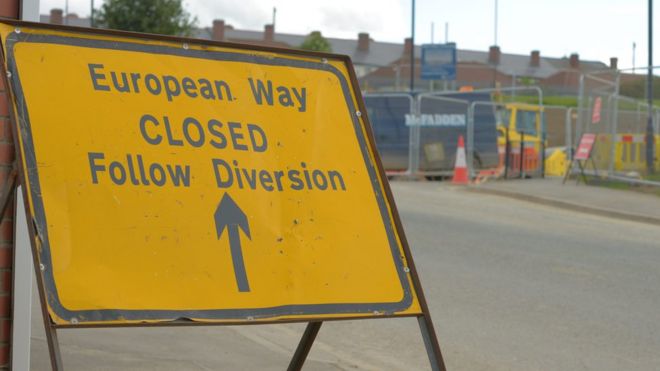Sunderland, like most areas in the North voted overwhelmingly to leave the EU, with 61% of Sunderland voters choosing to come out of the EU
Whilst undoubtedly the 'Leave' vote had many separate factors such as fears over jobs, immigration and the desire to claw back control from Brussels, not to mention the protest vote of wishing to register disatisfaction with the current political system - the houseimple.com research noted house prices in the 20 areas with the highest vote for Brexit have increased just 9% since 2011, compared to 18% in the 20 areas with the highest percentage of votes to Remain.
The following graph visually illustrates how the percentage of Remain vs Leave votes plotted against house price changes
Bizarrely Sunderland does not feature in the summary figures shown, despite the 61% vote being higher than 12 of the areas included, however putting that to one side, in Hartlepool and Burnley, which had the highest level of support in the country to leave the EU (69% and 66% respectively), the report states that house prices have fallen 5% and 8% respectively in the last five years.
I've done my own research and having done so I'd suggest the above are 'asking prices' which most clued up property people will know are really not the same as what properties are actually selling for
With this in mind I've looked at Land Registry sold price data for Sunderland, Hartlepool and Burnley then compared them to the English cities with the highest Remain votes, namely Cambridge, Brighton and Bristol, all of which had Remain votes in excess of 60%
I'm ignoring Scotland as the Land Registry doesn't cover Scotland and ignoring London as as it has had some of the highest and fastest house price growth in the country, and would skew the data. For example Hackney, in east London, where house prices have risen by 62% in the last five years, voted 78.5% in favour of Remain...
When looking at sold values, the 'Leave' areas of Sunderland, Hartlepool and Burnley in the last 5 years, Sunderland and Burnley showed sold values falling by 12% and 18% respectively with Hartlepool showing a modest increase of 2%
Compare this to the three top Remain areas where they all showed double digit growth, with Cambridge sold values increasing by 48% in the last 5 years, Brighton increasing 39% and Bristol by 35%
The report noted that "Many areas of the country, particularly in the North, haven’t enjoyed the boom times experienced in London since 2011, an area which voted strongly to remain in the EU.”
It is also telling that the other cities which voted Remain tended to have a young population, have retained graduates and have high levels of employment. These are also likely to have higher house price growth due to a high levels of demand which have outstripped supply.
With this in mind it would be overly simplistic to say that house price growth was directly linked to the way an area voted - Newcastle disproves this theory as it experienced the same 2% sold value increase as Hartlepool over the last 5 years but voted by the slimmest of margins 50.7% to Remain - however the housing market is a good indicator of the relative prosperity of an area which links back to the likely underlying feelings of it's population
If you'd like to have a chat about any aspect of the Sunderland property market feel free to give me a call on 0191 567 8577 or email neil.whitfield@belvoirlettings.com

No comments:
Post a Comment